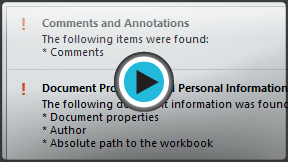Excel 2013
Finalizing and Protecting Workbooks
Introduction
Before sharing a workbook, you'll want to make sure it doesn't include any spelling errors or information you wish to keep private. Fortunately, Excel includes several tools to help finalize and protect your workbook, such as Spell Check and the Document Inspector.
Optional: Download our Lesson 25 Practice Workbook.
To use Spell Check:
- From the Review tab, click the Spelling command.
 Clicking the Spelling command
Clicking the Spelling command - The Spelling dialog box will appear. For each spelling error in your worksheet, Spell Check will try to offer suggestions for the correct spelling. Choose a suggestion, then click Change to correct the error.
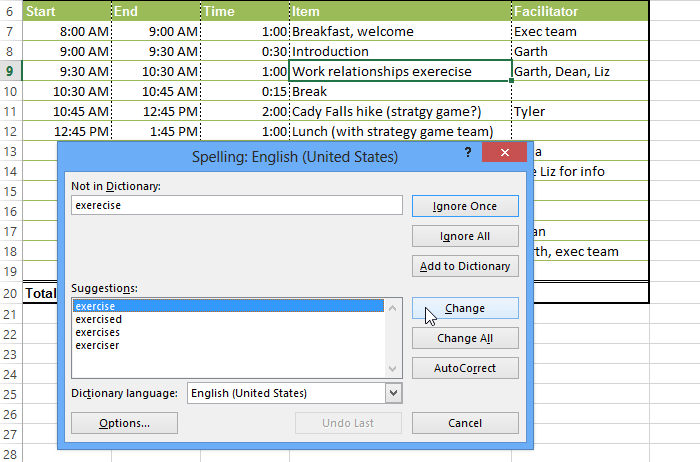 Using Spell Check to correct spelling errors
Using Spell Check to correct spelling errors - A dialog box will appear after reviewing all spelling errors. Click OK to close Spell Check.
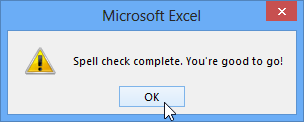 Closing Spell Check
Closing Spell Check
If there are no appropriate suggestions, you can also enter the correct spelling manually.
Ignoring spelling "errors"
Spell Check isn't always correct. It will sometimes mark certain words as incorrect, even if they're spelled correctly. This often happens with names, which may not be in the dictionary. You can choose not to change a spelling "error" using one of three options:
- Ignore Once: This will skip the word without changing it.
- Ignore All: This will skip the word without changing it and also skip all other instances of the word in your worksheet.
- Add: This adds the word to the dictionary so it will never appear as an error again. Make sure the word is spelled correctly before choosing this option.
Document Inspector
Whenever you create or edit a workbook, certain personal information may be added to the file automatically. You can use the Document Inspector to remove this kind of information before sharing a workbook with others.
Because some changes may be permanent, it's a good idea to save an additional copy of your workbook before using the Document Inspector to remove information.
To use the Document Inspector:
- Click the File tab to access Backstage view.
- From the Info pane, click Check for Issues, then select Inspect Document from the drop-down menu.
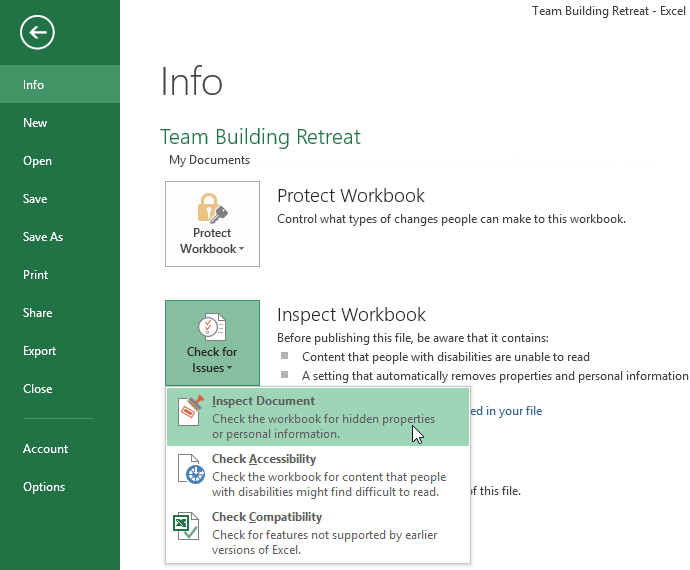 Clicking Inspect Document
Clicking Inspect Document - The Document Inspector will appear. Check or uncheck boxes, depending on the content you wish to review, then click Inspect. In our example, we'll leave everything selected.
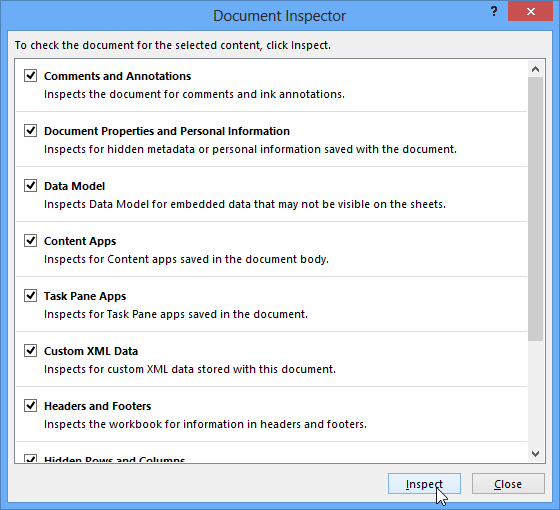 Inspecting the workbook
Inspecting the workbook - The inspection results will appear. In our example, we can see that our workbook contains some personal information, so we'll click Remove All to remove that information from the workbook.
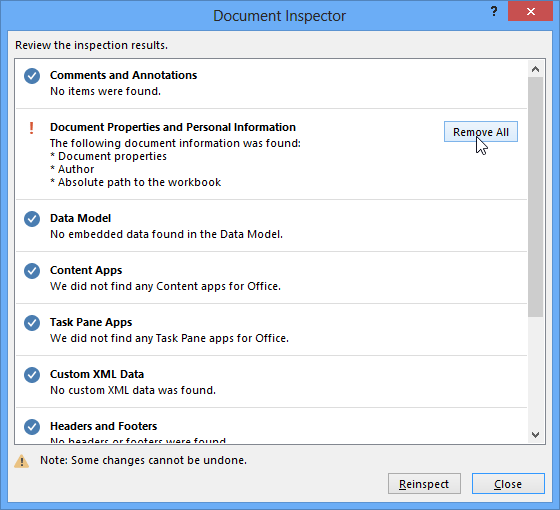 Removing personal information from the workbook
Removing personal information from the workbook - When you're done, click Close.
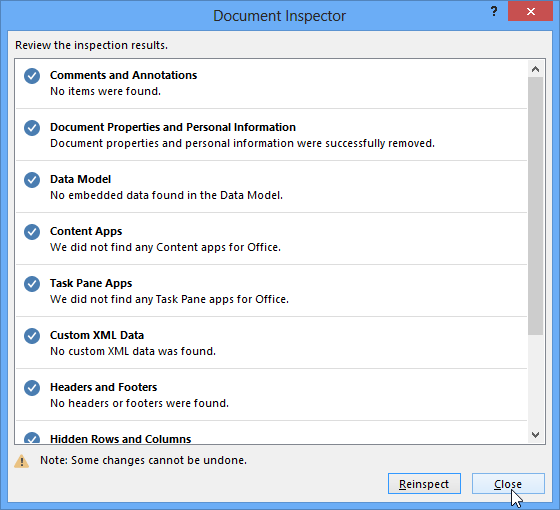 Closing the Document Inspector
Closing the Document Inspector
Protecting your workbook
By default, anyone with access to your workbook will be able to open, copy, and edit its content unless you protect it. There are many different ways to protect a workbook, depending on your needs.
To protect your workbook:
- Click the File tab to access Backstage view.
- From the Info pane, click the Protect Workbook command.
- In the drop-down menu, choose the option that best suits your needs. In our example, we'll select Mark as Final. Marking your workbook as final is a good way to discourage others from editing the workbook, while the other options give you even more control if needed.
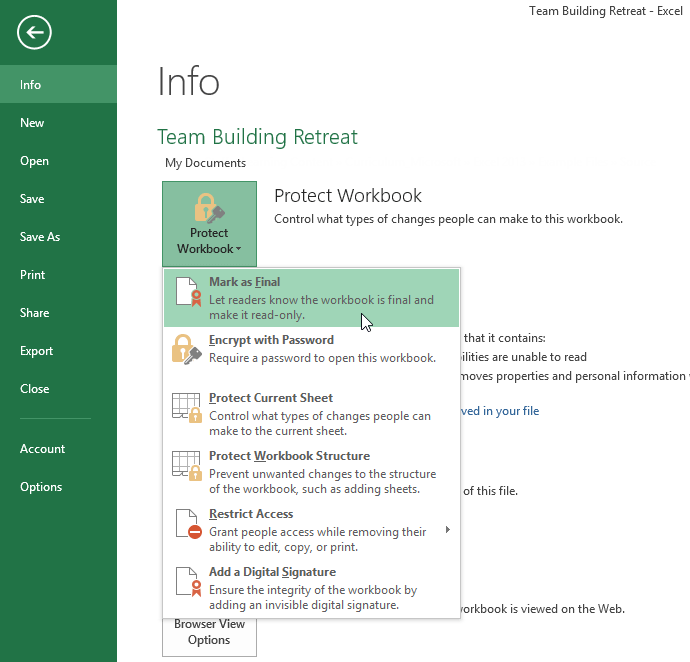 Selecting Mark as Final
Selecting Mark as Final - A dialog box will appear, prompting you to save. Click OK.
 Clicking OK to save the workbook
Clicking OK to save the workbook - Another dialog box will appear. Click OK.
 Clicking OK
Clicking OK - The workbook will be marked as final.
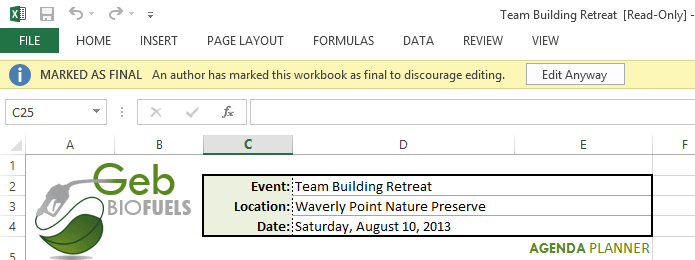 A workbook marked as final
A workbook marked as final
Marking a workbook as final will not prevent someone from editing it. If you want to prevent people from editing it, you can use the Restrict Access option instead.
Challenge!
- Open an existing Excel workbook. If you want, you can use the Lesson 25 Practice Workbook.
- Run the Spell Check to correct any spelling errors in the workbook.
- Use the Document Inspector to check the workbook. If you are using the example, remove all personal information from the workbook.
- Protect the workbook by marking it as final.



